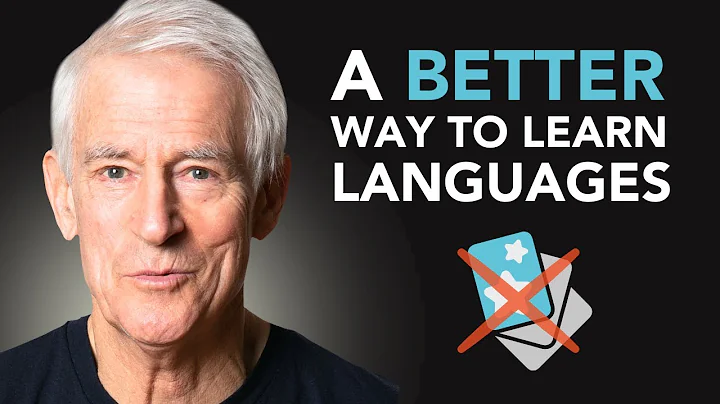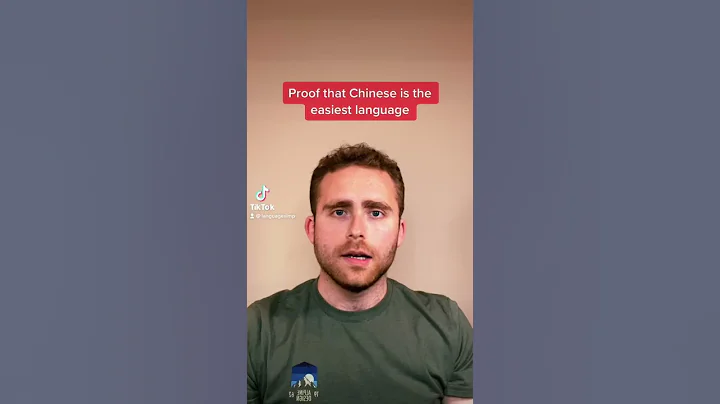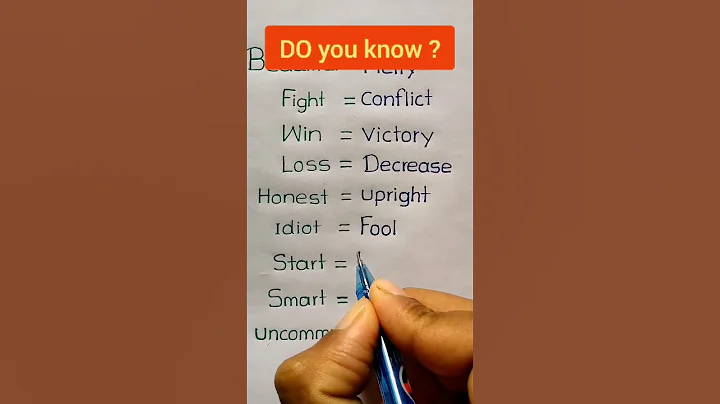Many people think that the explanations and exercises in the mathematics textbook are too simple. They think that only learning the content in the mathematics textbook will fail to keep up with their studies and fail the exam. is this real?
And allow me to speak slowly, maybe after reading this article, your and your child's understanding of learning methods will be subverted.
Station B has a video of the famous mathematician Hua Luogeng teaching mathematics on TV. It has been viewed more than 1.12 million times, and there are more than 1,700 comments below the video. This video can also be found on the headline and the watermelon video. The video on the watermelon video has been viewed more than 260,000 times, and there are nearly a thousand comments below the video.

Hua Luogeng: I may be incompetent, because my understanding of mathematics is not so comprehensive

On February 8, 1979, the famous mathematician Hua Luogeng gave a lecture on advanced mathematics on TV p1p
In this televised lecture, Hua Luogeng explained how to prove that √2 is irrational number. This is exactly the content in the second book of seventh grade mathematics published by the People's Education Press. But from the message area below the video above, it can be seen that many people do not understand what Hua Luogeng is talking about. They don't know where this proposition comes from. Many people say that this is high school knowledge. Some people simply say that they don't understand anything. There are some who don't understand it, but they feel that they don't understand it thoroughly.
Hua Luogeng said before the explanation that in order to achieve the effect of "outline guide", he did not explain step by step. After his explanation, there will be a teacher "step by step to explain clearly to the comrades." In other words, Hua Luogeng skipped the detailed argumentation process in the process of explaining.
Therefore, some people who seem to "understand" only generally know the steps taught by Hua Luogeng. In fact, they don't know which supporting propositions have been crossed; therefore, some of them are not very clear. The honest person raised a lot of questions. I selected a few frequently-occurring questions in the message area to try to analyze and answer in this article.
Hua Luogeng:
What are you afraid of? Advanced mathematics itself requires a higher level of comrades. It is necessary to look at the overall situation to explain to the comrades, especially the first lesson. It is necessary to outline and introduce to the comrades, what is the content of advanced mathematics, but From this point of view, to me personally, I may be incompetent, because my understanding of mathematics is not so comprehensive.
Fortunately, in the future, some are time and some are time. In the future, the lecturer will explain it to the comrades step by step.
So in the class I'm talking about today, there are probably some places that comrades don't understand, or what they don't understand. But under this situation, you can take this to temporarily record it, and after looking at the future, in the middle of work, in the middle of study, see if it is, ah, look at it step by step, and use it to make it clearer and more thorough.
Click to watch the video →

Hua Luogeng teaches the reduction method: p/q = √2 = 2p'/2q'

PEP Seventh Grade Mathematics Volume 2
span span6span also explained the proof process of this proposition in the handout " real analysis" written to undergraduates. The aftermath caused by the proposition that triggered the first mathematical crisis of still rippling at two thousand five hundred. Mathematics is overwhelming after many years. Similarly, Tao Zexuan did not give a detailed argumentation process. It is estimated that when teaching propositions, great mathematicians will assume in advance that the audience has mastered the corresponding basic knowledge, so they only focus on the main body and ignore the minor details.

Tao Zhexuan: "Real Analysis"
I also watched the video on the tubing that teaches this proposition and is ranked in the top few views.Their explanations are not more detailed than Hua Luogeng and Tao Xuanzhe.
An American company (Worldwide Center of Mathematics) that compiled textbooks included the proposition "Prove that √2 is an irrational number" into the university's basic course list (Basics: College Algebra), and emphasized that for mathematicians, It's important to learn this proposition (... it's important for all mathematicians to learn ).
Seeing this, do you still think the content in our math textbook is too simple? [呲牙]
At present, the most powerful education reformer and educational thinker Salman Amin Khan (Salman Amin Khan) is a top student who graduated from MIT. He is currently online The teacher who is most able to teach mathematics, physics and chemistry, his interpretation of the proposition of how to prove that √2 is an irrational number is not much more detailed than Hua Luogeng and Tao Zhexuan. Hua Luogeng omitted what he did not say, and he did not say it.
Salman Amin Khan (Salman Amin Khan): Suppose we go back to 400 years ago. Western Europe was already one of the most civilized regions on the earth at that time. You will find that 15% of the population is literate. It is estimated that when you ask a literate person, such as a clergyman, "How many people do you think are literate?" They might say, "Well, based on this strong education system, there is probably 20% or 30%.”
But if you fast forward to the present, we will find that such predictions are too pessimistic. Now almost everyone is literate.
When I asked you a similar question: "How much do you think of the total population really master calculus,Or is it someone who really understands organic chemistry, or has the ability to contribute to cancer research? "Many of you will answer: "Well, based on this powerful education system, there is probably 20% or 30%. "
But what if those judgments are only... based on your own experience or only observations of people around you? Or based on being forced to follow the classroom progress and accumulating loopholes? Even if you have 95% What about the remaining 5%?
The vulnerabilities continue to accumulate until you enter a higher education class and suddenly hit a wall. Then you say: "I was not born a cancer researcher. I was not a physicist. No mathematician. "
... When we can look at it from the perspective of mastering knowledge... Then the proportion of people who really master calculus or organic chemistry will be close to 100%... I think all of this is based on a concept ...


Now I will try to answer some of the questions that I missed in the comments. Hua Luogeng said that if √2 is a rational number, then it can be written in the form of the ratio of two integers, that is, the form of p/q.
① Then someone on the Internet has asked why a rational number can be written as the ratio of two integers
In this regard, Tao Zhexuan did not give an explanation in "Real Analysis":

Tao Zhexuan: "Real Analysis"
blockquote
blockquote
blockquote32 : About the translation of rational number. The English word rational means "rational",Similar to reasonable. But as the attributive of number, it should mean ratio, which means ratio, so rational number should mean ratio-number, which means ratio. Therefore, the whole text is translated as a proportional number, not a rational number. Accordingly, an irrational number is translated as a non-proportional number or a non-rational number, not an irrational number. (Tao Zhexuan: "Real Analysis", translated by Wang Kunyang)
I think the best explanation may be in "Geometric Elements·Volume 5·Definition 5":
DEFINITIONS
5. Magnitude are said to be in the same ratio, the first to the second and the third to the fourth, when, if any equimultiples whatever be taken of the first and third, and any equimultiples whatever of the second and fourth, the former equimultiples alike exceed , are alike equal to, or alike fall short of, the latter equimultiples respectively taken in corresponding order.
Let a and b be two quantities of the same kind, and c and d are also two quantities of the same kind, right For arbitrary integers m and n, if one of the three relations ma> =
= Euclid for the proportion of four quantities. This definition is equivalent to the definition of modern comparative proportions.
(Euclidean: " Geometry Original", translated by Lan Jizheng and Zhu Enkuan)
What Euclid wants to tell us is that you can write any span_5span rational number. span6span, whether it is an integer, a finite decimal, or an infinite cyclic decimal , they can all be put into the mode of "Geometric Elements·Volume 5·Definition 5". They are all shrouded in this mathematical model. Of.
For example:
2 = 2: 1 = 4: 2
1.5 = 3: 2 = 6: 4
-1 = (﹣1): 1 = 2: (﹣strong2) _strong
0 = 0: 1 = 0: 2
0.333... = 1: 3 = 2: 6
We can also write an infinite loop decimal arbitrarily, and then calculate its score For example, we write 3.3...
. Let:
X = 3.3...
Multiply both sides of this equation by 10 at the same time to get:
10X = 33.3...
then use 10X-X to get a score of 3.33...:
10X- X = 33.3...-3.3...
9X = 30
X = 30/9
3.3... The fractional form is 30/9
In fact, "Geometric Elements·Volume 5·Definition 5" explains a relationship between integers and integers.It is to use an integer to measure (to compare) the properties produced by another integer. The property of
is: you can write any rational number at will, whether it is an integer, a finite decimal, or an infinite recurring decimal, they can be put into the mode of "Geometric Elements·Volume 5·Definition 5". They can all be shown as a comparative relationship.

"Geometric Elements·Volume Seven·Definitions"
② In fact, the mathematical model of "Geometric Elements·Volume 5·Definition 5" also answers another question. It answers the bottom of the video taught by Hua Luogeng Another question asked in the message area: Why must the ratio of two positive integers expressing rational numbers can be reduced to a relatively prime form p/q (reduced to a common measurement only by the unit "1")?
Those quantities that can be exhausted by the same amount are called commensurable metric, and those that cannot be exhausted by the same amount are called uncommensurable metric.
(Euclidean: "The Original Geometry·Volume 10·Definition 1", translated by Lan Jizheng and Zhu Enkuan)
Because "The Geometry·Volume 5·Definition 5" talks about taking any multiple (any equimultiples), which tells us that a score can be divided into countless forms:
1/2 = 2/4 = 4/8 = 8/16 = ...... It can be extended indefinitely. Go down
However, all the fractions obtained by taking the same multiple from the numerator and denominator are essentially homogeneous, and the ratio of the former term (numerator) to the latter term (denominator) is fixed; these expanded fractions Launched like rays, there is no end, only a starting point, and their starting point is a fraction with relatively prime numerator and denominator like 1/2. Conversely, we can return from any point after the extension (any fraction after the extension) to the original starting point (a fraction where the numerator and denominator are relatively prime).
If the above explanation is not clear enough,Then we can change another explanation:
We assume that a non-prime rational number is x = p/q (p≠0, q≠0), and assume that the numerator and denominator of this rational number are relatively prime after the numerator and denominator are reduced. The score is p'/q'
Then the greatest common factor of of p and q will be a number greater than 1
Let the greatest common factor of p and q be y
then p'= p/y, q'= q/y
then p = p'y, q = q'y
then x = p/q = (p'y)/ (q'y) = p'/q'
, The rational number will eventually be reduced to a fraction whose numerator and denominator are relatively prime.
③ Hua Luogeng said: In the formula 2q² = p², p must be divisible by 2, and p must be an even number. Then the message area is asking: Why must p be an even number?
Seeing the conclusion that p in 2q² = p² must be an even number, we will guess such a proposition: If the square of an integer p is an even number, then p must be an even number.
We can first assume that p² is an even number, and that p is an odd number, and see what will happen:
Because p is odd, p can be expressed as +strong 1strong p = 2k (k is an integer)
so p² = (2k + 1)²
= (2k)² + 2 x 2k x 1 + 1²
This uses the eighth grade mathematics booklet Square formula,The textbook exercises caused the seventh grade students to encounter the content of the eighth grade that they have not yet learned. Do you still think that the explanations and exercises in the math textbook are too simple?
= 4k² + 4k + 1
= 2 (2k² + 2k) + 1
The deduced result is that p² is an even number that we assume is an odd number _² Contradictory, so p is not an odd number, but an even number.
If it is not clear enough, let us assume that p is even (p = 2k , even can be expressed in the form of 2k) Try:
p² = (2k)² _strong pstrong _p1 = 4k²
= 2 x 2k²
The derivation result shows that p ² is an even number, which is consistent with the assumption.
Qiu Chengtong : There is another interesting fact,Chinese mathematicians almost never use 's proof-of-contrast method to prove theorems. Probably the reason: Although the proof-of-contrary method can point out the truthfulness of the theorem, it can't draw practical applications. When Euclid proved that there are infinitely many prime numbers, Western mathematicians already knew the power of the contradiction method. In ancient China, the use of logic was far less than that of the West, and its interest in pure scientific truth was not as good as that of the West. (Yau Chengtong: " History of Mathematics and Mathematics Education ")
④ The last question, then who is the earliest giver of this proposition? This question is not only unknown to Baidu Baike, but even some mathematicians got it wrong. Tobias Dantzig said that this proposition was given by Euclid:
Tobias Dantzig:...Euclid's beautiful proof, which isgiven below. .. Euclid 's proof of the incommensurability of the diagonal of the square with its side is of the type reductio ad absurdum. It is geometrical only in appearance,for it is based on pure consideration of the theory of numbers... (Number: The Language of Science. by Tobias Dantzig)
The specific life experience of this proposition is recorded in the appendix of "Geometric Elements·Volume Ten" ,It’s a pity that it has not been translated into Chinese, and all the Chinese versions of Geometry Original have not translated it, so Baidu Encyclopedia does not know its specific source [呲牙]

The Thirteen Books of Euclid's Elements. by Euclid(Author), TLHeath(Translator)
Thomas Heath, a historian of ancient Greek mathematics, said that the proof of this proposition was given by Pythagorean school, from Pythagoras → Aristotle → Judging from the order of the three Euclid’s lives, this conclusion is highly credible. Because Aristotle quoted this proposition in his "Pre-Analysis", and Euclid was probably born after Aristotle's death, and Aristotle could not have traveled to In the future (Euclidean era) to steal research results.
Qiu Chengtong: Chinese scholars pay little attention to the history of mathematics development and the basic philosophy that supports mathematics. Most scholars Xiao Gui and Cao Sui only solve some problems... When we read the life and research of major mathematicians in the past. In the method, we will know the origin of 's mathematical thought , so when we come into contact with beautiful natural phenomena, we will have a natural reaction and can open up new thinking.
(Qiu Chengtong: "The History of Mathematics and Mathematics Education")

Aristotle: "The Complete Works of Aristotle 1 · Pre-Analysis" Yu Jiyuan Translation
Let's go back To the original question,Are the explanations and exercises in the textbook really too simple?
You might say that you can’t just use to prove that √2 is an irrational number. It is difficult to prove the content of mathematics textbooks using the proposition .
My answer to this is that if you are more careful and like to think, there are unpredictable content hidden everywhere in the textbook: Chern: The exam is just a temporary performance, and learning is the most important thing. 











